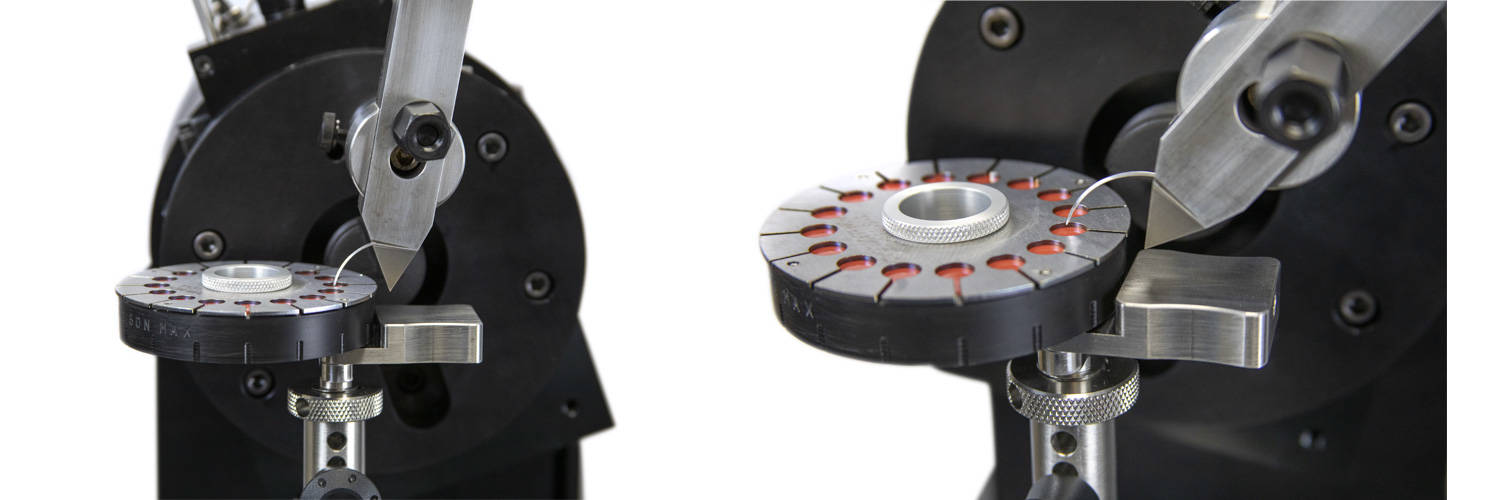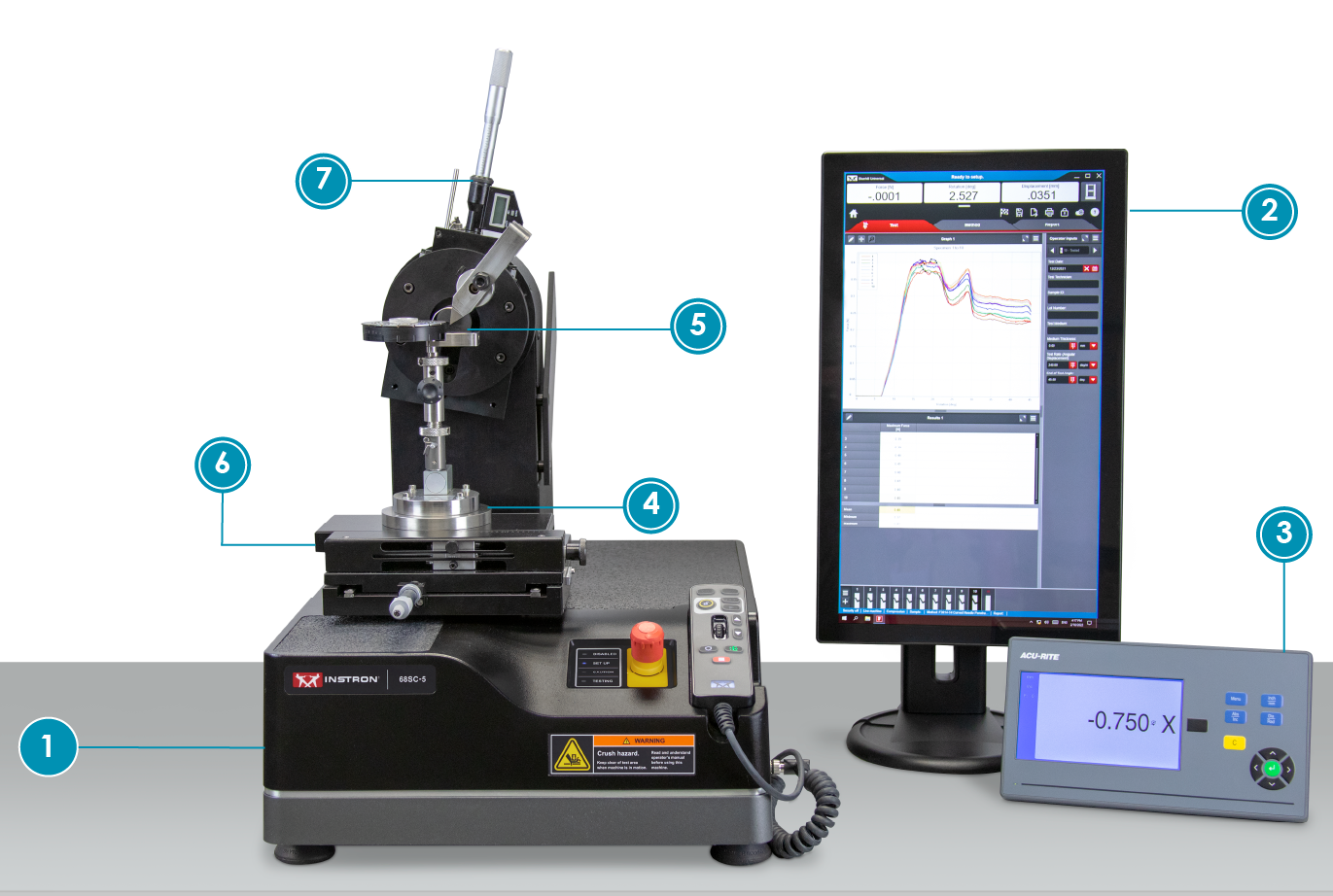KEY CONSIDERATIONS FOR TESTING
During product research and development, penetration testing is key to identifying a needle coating with the ideal balance of lubricity and durability. This ensures that the needle can be used reliably for the minimum number of throws to close a wound. Bend testing can also be used during the material selection process or as an in-process quality control check for manufacturing consistency. A material defect causing the tip of the needle to break could cause undue pain for a patient.
During the manufacturing process, penetration testing primarily serves to ensure that the needle retains its sharpness and that the applied coating is performing as expected, as the lubricity of the coating is a main driver of the penetration force. Since a curved needle will be threaded multiple times in practice, the penetration test must be performed a minimum of 10 times per needle to ensure that coating will not wear out over repeated use, causing an increase in the penetration force. The result will be a maximum penetration force for each run, as well as qualitative evaluation of the coating's durability from penetration force range.
There are two main standards dedicated to assessing the functionality of curved needles: ASTM F3014 for penetration testing & ASTM F1874 for bend testing. It should be noted that ASTM F1874 was formally withdrawn in 2020 with no replacement. However, manufacturers may still perform internal qualifications based on the procedures outlined in the standard.
Materials Testing SystemBend testing of curved needles most closely resembles a cantilever bend test with a fixed platform or edge and a rotating needle. The test is performed until there is plastic deformation of the needle, with the objective of identifying the yield bend moment, the yield bend angle, and the maximum bend moment.
Unlike straight needles, which are used with a linear motion, angular motion is necessary to best simulate the real-world use of a curved needle. Instron's 68SC-1 Curved Needle Tester converts the motor rotation into angular movement with an encoder registering the angle during the test. A 5 or 10 N load cell is typically mounted to the base, with the appropriate penetration or bend fixture attached. For penetration testing, a manual or automated turret is required to allow for the 10 tests on a single needle. The turret is ideal for repeatability and prevents the need to adjust the needle in between test runs. The needle holder is adjustable to accommodate a wide range of curved needle lengths and radii.
Bluehill Universalのカタログ
Bluehill Universalソフトウェアは、タッチ操作と直感的なユーザーエクスペリエンスを念頭に構築されています。標準装備の試験メソッド、数秒で行われるQuickTest、強化されたデータエクスポート、そしてサービスとの直接通信を提供する新機能Instron Connectなどの機能が、これまでよりもシンプルでスマートな試験を可能にします。Bluehill 2やBluehill 3などの旧バージョンソフトウェアからは、簡単に最新バージョンのBluehillにアップグレードできます。


